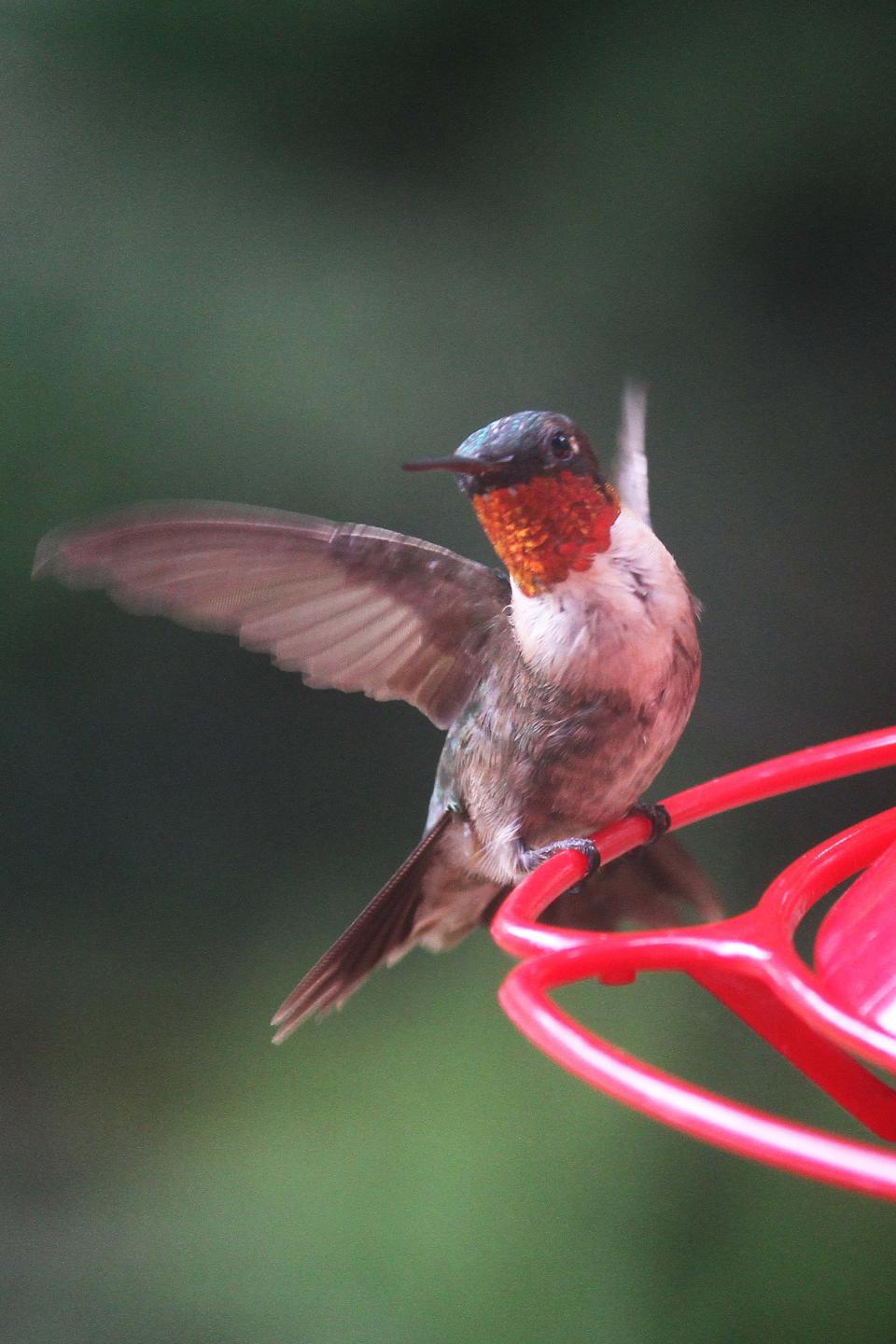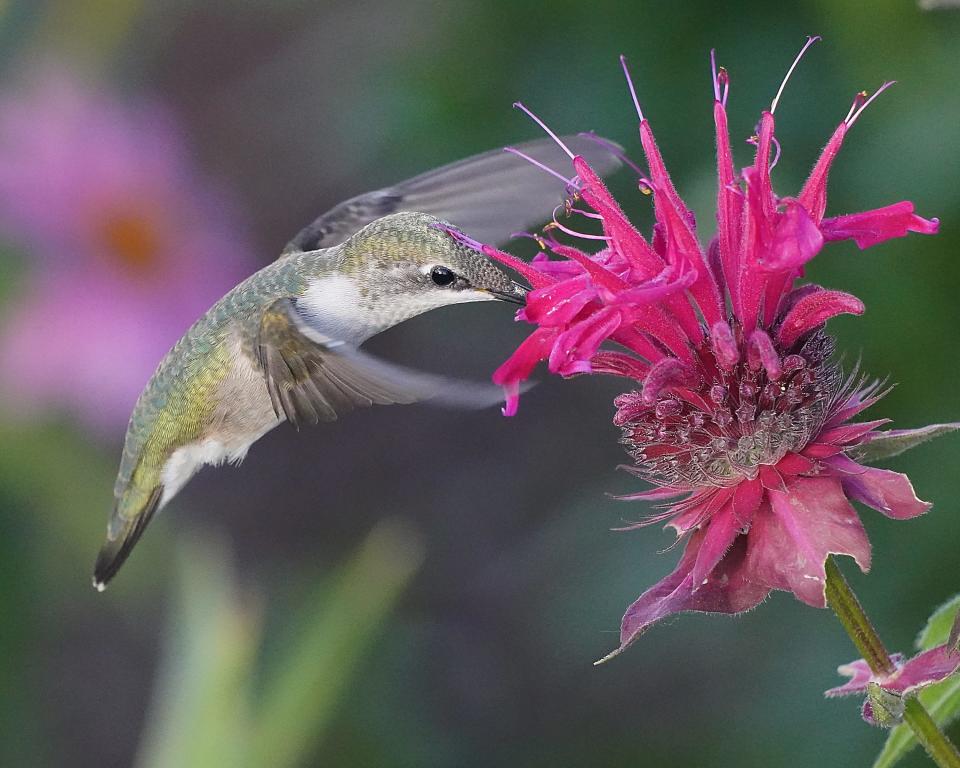Interactive map shows ruby-throated hummingbird migration. Here's when they'll come to RI
With warm days and plenty of flowers in bloom, spring is in full swing in Rhode Island, which means it’s almost time for the hummingbirds to return.
The only species of hummingbird that breeds in Rhode Island is the ruby-throated hummingbird, according to Charles Clarkson, director of Audubon Avian Research. Weighing less than a nickel, these tiny birds migrate from the United States to Mexico, Costa Rica and Panama for the winter.

Then, they have to come back.
“Individuals typically arrive in late April with migration lasting through late May,” Clarkson said in an email. “After late May, hummingbirds that visit feeders are likely breeding nearby.”
For those who love them, their journey is carefully tracked.
More tips: How to support hummingbirds during spring migration
Where to see the hummingbirds' path
This map shows the journey of hummingbirds as they travel north across North America this spring. No sightings have been reported yet in Rhode Island, but they are getting close.
Tips for feeding hummingbirds

In order to complete their annual migration, hummingbirds consume half their body weight in insects and nectar by feeding every 10 to 15 minutes and visiting 1,000 to 2,000 flowers per day.
Want hummingbirds? Here's how you can attract them to your yard.
To help them on their journey, humans can help by providing food sources.
If you want to set up a feeder for the hummingbirds, Clarkson recommends the following:
A mixture that is one part sugar to four parts water. A tip: “Bleached white sugar works just fine, and many individual birds seem to prefer it,” he wrote.
Change the feeder every week.
When you change the food, clean the feeder with a solution that is 10% bleach and 90% water. Rinse well.
Hang the feeder in an open area. “Hummingbirds dart around and maneuver constantly and need the space to accommodate these movements,” he wrote.
If you prefer to provide a food source by way of plants, Clarkson said to plant natives such as bee balm and trumpet creeper. Hummingbirds will also visit bird baths, particularly those that have moving water.
This article originally appeared on The Providence Journal: Ruby-throated hummingbirds are migrating to RI. Map their journey.

